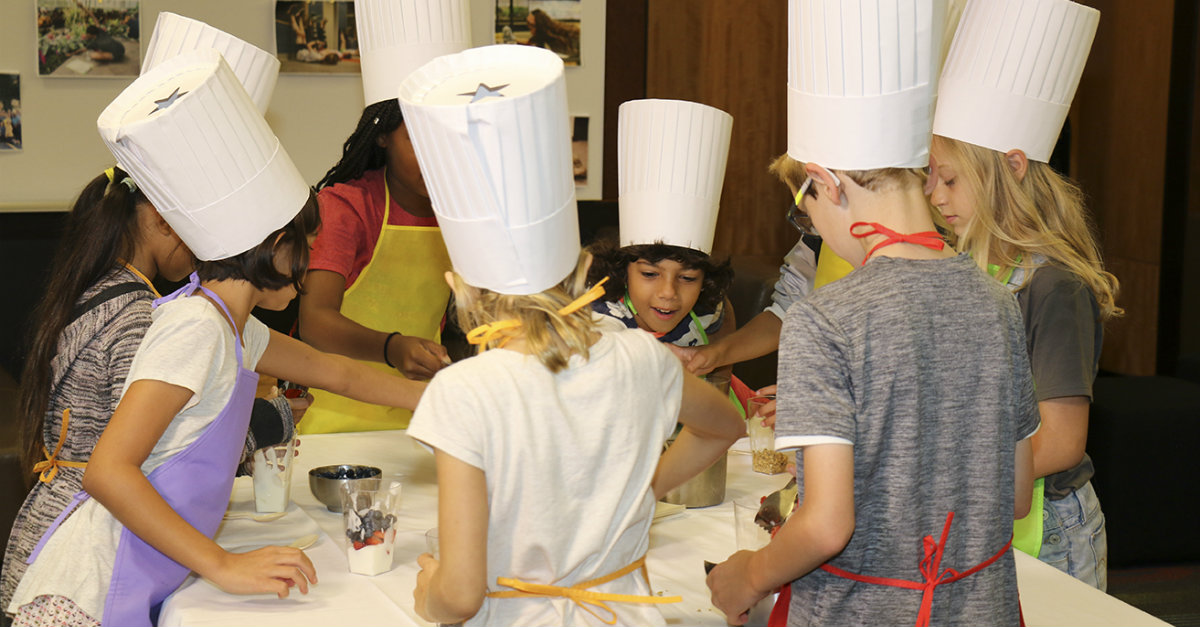I’m all about tradition—those cherished practices, beliefs, and rituals passed down from one generation to another. Maybe for you that would be dinner together at 6 pm, a family game night, or first day of school pics. These are moments with our loved ones that truly make our lives richer.
But what about tradition in our classrooms? As we prepare the next generation to navigate the complexities ahead, could traditional instruction be holding them back?
It’s sobering to realize that 85% of the jobs students will be filling in 2030 don’t even exist today. Employers are getting ready by seeking new hires with specific, 21st century skills. At the top of the list: The ability to work on a team, solve problems, and communicate.
We owe it to our students to teach those skills. But how? Through traditional instruction delivered within the four walls of a classroom? Or is there a better way?
PBL, a different kind of instruction
When I think of project-based learning (PBL) I think of authentic learning at its best. No longer are children sitting behind desks, listening to lectures, and taking tests. In a PBL classroom, they are engaged in meaningful projects over an extended period of time. Motivated by a challenging question or relevant problem, they investigate, critique and revise, reflect, and share their ideas with others.
Through the process, they become systems thinkers and explorers. They learn to think divergently, make deep connections between ideas, and take creative risks. They develop a new love of learning. And, most importantly, they prepare for the world ahead.
Sounds good…but kinda complicated?
I know! PBL can feel overwhelming. But it doesn’t have to be. Take a deep breath and follow these tips for easing into this new and thrilling world of learning:
- Prepare: You’ve been in the classroom long enough to know that anything new requires extra time. PBL is no exception. It calls for planning, design, communication, and structure. It may sound like a lot of teacher prep work for just one lesson. And you may be tempted to throw out a problem and just see what happens. (Don’t!) But remember, one project can last for weeks and hit numerous standards. I assure you, the time you spend preparing is worth it.
- Grab kids from the start: Ask your class a thought-provoking question: Are we making the best decisions when it comes to nutrition? How can we reduce energy consumption? Could efforts to conserve our soil result in more sustainable food production and stable food supply? Talk about motivating. You can see the creative wheels in their brains spinning.
- Let kids do the heavy lifting. For authentic learning to happen, students must be in the driver’s seat. In PBL, the kids—not the teacher—do the work. Along the way, students learn lasting “adult” skills, like how to create a budget, plan their time, resolve conflicts, and negotiate resources. They also have a blast being in charge for a change, independently making decisions, and making the world a better place.
- Start small: As with anything new, it’s a good idea to keep it simple. Focus on 1-2 standards. Limit the time period to a week at the most. And, when it comes to project ideas, there’s no need to re-invent the wheel. Take a look at what others are doing. There’s a world of resources on the Web you can adapt to your own class.
- Make it meaningful: Ever heard students complain, “When will we ever use this stuff in real life?” Sure you have. This is what PBL is all about—making learning real and relevant while developing learners who are the change makers our world needs.
Please share your PBL experiences with us!
For more information:
View the 30-minute webinar on this topic entitled Project-Based Learning in Your Classroom: Tips and Tricks to Get Started!
Also, check out these downloadable resources within the webinar:
Seven Tips for Implementing Project-Based Learning in Your Classroom
Blue Apple Projects
